We simply love Iran at Inverted Atlas, because it’s a place filled with unique, strange and downright weird attractions and experiences. We hope you enjoy reading about some of our favourites.
The Chogha Zanbil Ziggurat
A ziggurat is a large pyramid shaped complex usually associated with the ancient Babylonians, Elamites or Urartians. As such, they are usually located in what is now present-day Iraq meaning that they are for most of us, out of reach. The ziggurat of Chogha Zanbil is located in southern Iran close to the small city of Ahvaz and is an amazing site to explore completely free from other travellers.
The ziggurat is part of a larger complex, which was once an ancient town called Dur Untash in Assyrian, however it is unlikely that anyone besides priests and servants ever lived here. The complex is divided by three concentric walls which define the towns areas, with the great ziggurat in the centre. The ziggurat was once decorated with gypsum and ornaments of faience and glass, the most important places in the building were ornamented with thousands of baked bricks bearing inscriptions in Elamite cuneiform characters giving the names deities in both Elamite and Akkadian, the universal language of the most ancient world.
The middle wall contains temples to lesser gods, and it is believed that twenty-two temples were originally planned, however King Untash-Napirisha died after only eleven were completed.
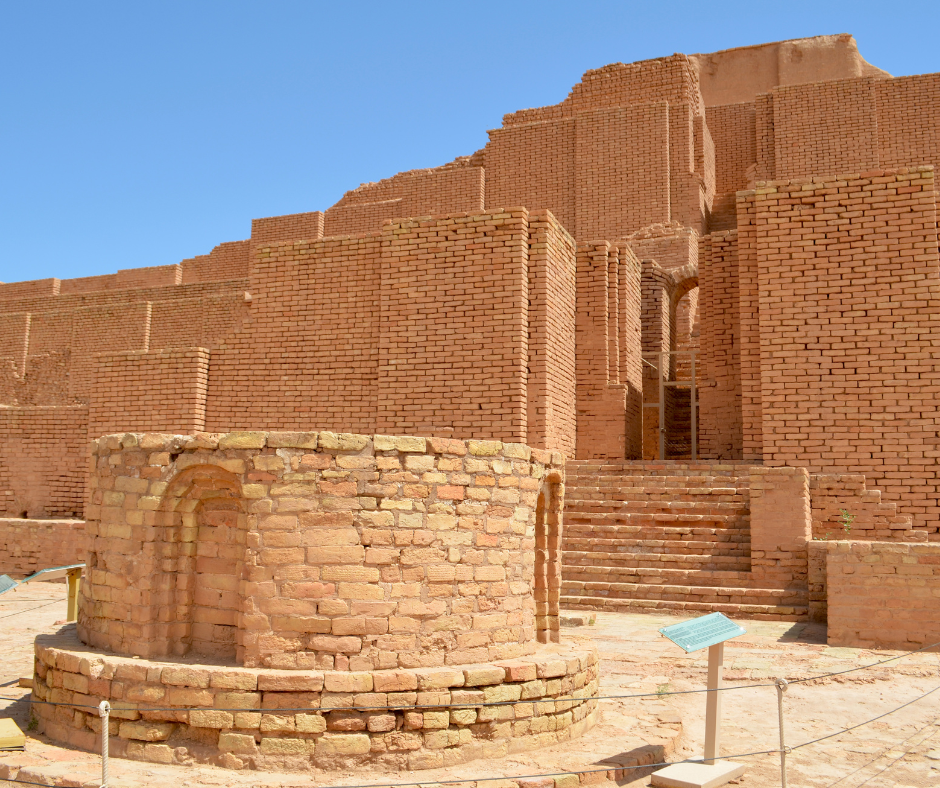
The middle wall contains temples to lesser gods, and it is believed that twenty-two temples were originally planned, however King Untash-Napirisha died after only eleven were completed.
The ziggurat was the first site in Iran to inscribed on the UNESCO world heritage list and is considered to be the best-preserved example of a stepped pyramidal monument.
Visit the Chogha Zanbil Ziggurat on our ‘Magic Carpet Ride’ trip on the Trans-Iranian Railway.

Qeshm Island
Not many people realise that Iran actually has quite a few islands that are part of its territory and one of these is the arrow shaped island of Qeshm just off the coast in the Persian Gulf. Also called ‘the island of wonders’ this place holds many hidden treasures, including the ‘Valley of the Stars’ a rare and amazing geological phenomenon. The mysterious formations of the valley are caused by wind and water erosion and the formations are similar to others found in Arizona in the USA. Locals believe the valley is haunted and will tell you not to go there at night, the sounds that cause the belief that the valley is inhabited by ghosts and genies are actually the wind whipping around the formations. The ‘Valley of the Stars’ has been added to the UNESCO World Heritage list and is the only geopark of its kind in Iran.
Contrastingly, the island of Qeshm is also home to one of the world’s only saltwater mangrove forests. You can take a boat ride here to see the unique flora and fauna of the island. Local fisherman come here to get their catch and believe that singing is lucky and wards off evil spirits while fishing, so you might even catch some local music while drifting along.
You can visit Qeshm Island on our ‘Quest of the Shah’s’ Luxury trip to Iran.
Makhunik
A very unusual place in Iran, Makhunik, is located 75km from the border with Afghanistan is often called ‘the Lilliput of Iran’ due to the fact that the inhabitants of this strange village were once only around one metre in height. Until the advent of vehicular transportation the village of Makhunik was extremely isolated which led to malnutrition, marriage between close relatives and drinking water laced with mercury all of which once contributed to the short stature of the residents.
The vast majority of Makhunik’s 700 residents live in tiny, partially subterranean troglodyte houses. The houses are not only built in this style because it is much easier to cool and heat smaller houses, but in previous ages this also helped the village blend in with the landscape giving in it kind of camouflage from potential invaders.
The residents of this village have quite strange customs compared to the rest of the country, most notably they don’t drink tea. Tea drinking in Iran is a huge part of Persian culture and social custom and has been for many centuries
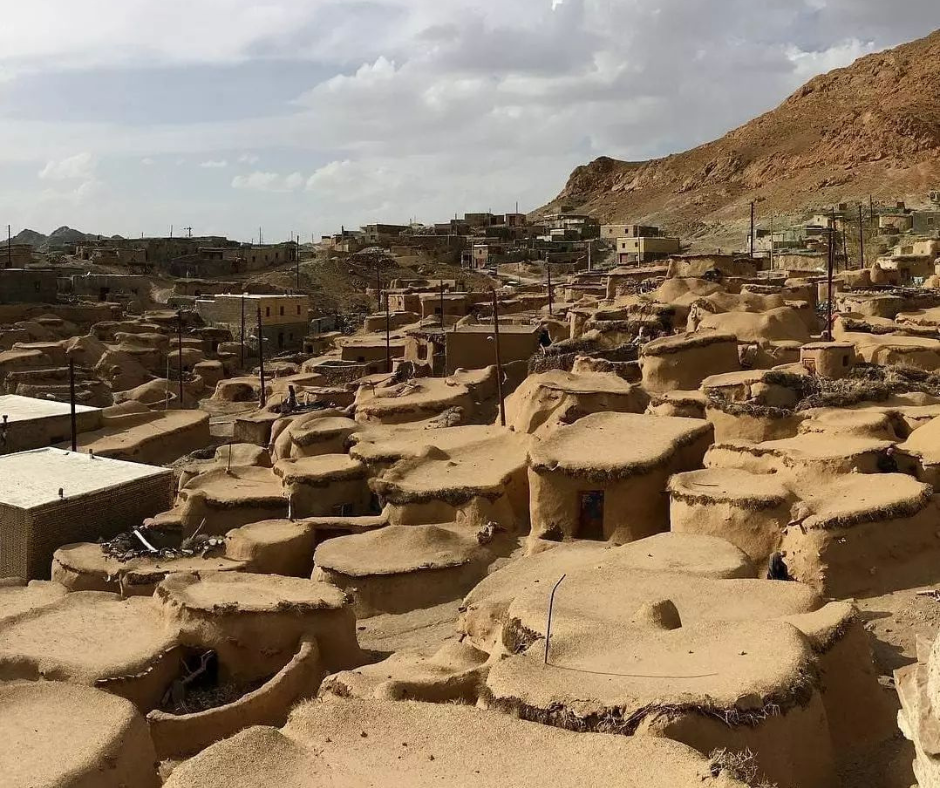
Mukhunik’s residents liken tea drinking to opium addiction. The residents also do not eat meat, smoke or watch television making this one of the most unique villages of Iran.
Visit Makhunik on our ‘Eastern Village Explorer’ trip to Iran

Badab-e Soort
Ever been to Pamukkale in Turkey? Did they tell you that these were the only Travertine Terraces in the world? Well, that’s not entirely accurate. Iran has its own set of terraces, called ‘Badab e-Soort’, located in the north of the country and what’s more, they are RED!
Badab, translates to ‘gas water’ in Persian and refers to the two springs that feed the terraces and their carbonated mineral waters. Soort is an old name for the village of Orost when which is nearby, again a Persian word, ‘intensity’. The two springs of Badab e-Soort contain different mineral properties, the first is a salt spring, that gathers in a small pool and is considered to have medicinal properties, especially for rheumatism and some skin conditions. The second spring has a sour taste (please take our word for it and don’t taste it) and has iron oxide sediments at its outlet, which is what gives the terraces their red tinge. The red tinge makes Badab-e Soort one of Iran’s unusual attractions.
The terraces are VERY old, they were formed during the Pleistocene and Pliocene geological periods and are the result of a very slow build-up of sediment deposited from the springs over millions of years. Iron carbonate and calcium carbonate are deposited in a soft form by the water, but eventually harden into travertine.
Badab e-Soort is quite hard to get to, it is located about 120km from the city of Sari in Northern Iran and the journey requires travelling winding isolated roads and stretches of unpaved mountain passes
Visit the Badab e-Soort on our ‘Magic Carpet Ride’ trip on the Trans-Iranian Railway.
The Lut Desert
The Lut Desert also called Dasht-e Lut is located in the province of Kerman in southern Iran and is one of the hottest places in the world, recording a record temperature of 70.7 C.
As early as 5000 BCE people have been living in this harsh environment, with a flourishing civilisation calling the Lut Desert home in 2500 BCE. The ancient city of Shahdad, as well as the huge city of Shahri-i-Sokhta have been discovered in the desert along with eighty-seven other ancient archaeological sites.
The town of Bam, located within the desert also has links with the ancient Silk Road, a trading route that once linked China with Europe. Bam was an important crossroads linking east with west from the 7th – 11th centuries CE.
The Lut desert is home to a fantastical environment and is the closest most people will ever get to visiting a Martian landscape without leaving the planet. The Lut is home to some astonishing sites including vast corrugated ridges known as ‘kaluts’. These kaluts are described by UNESCO as ‘an exceptional example of ongoing geological process’’.
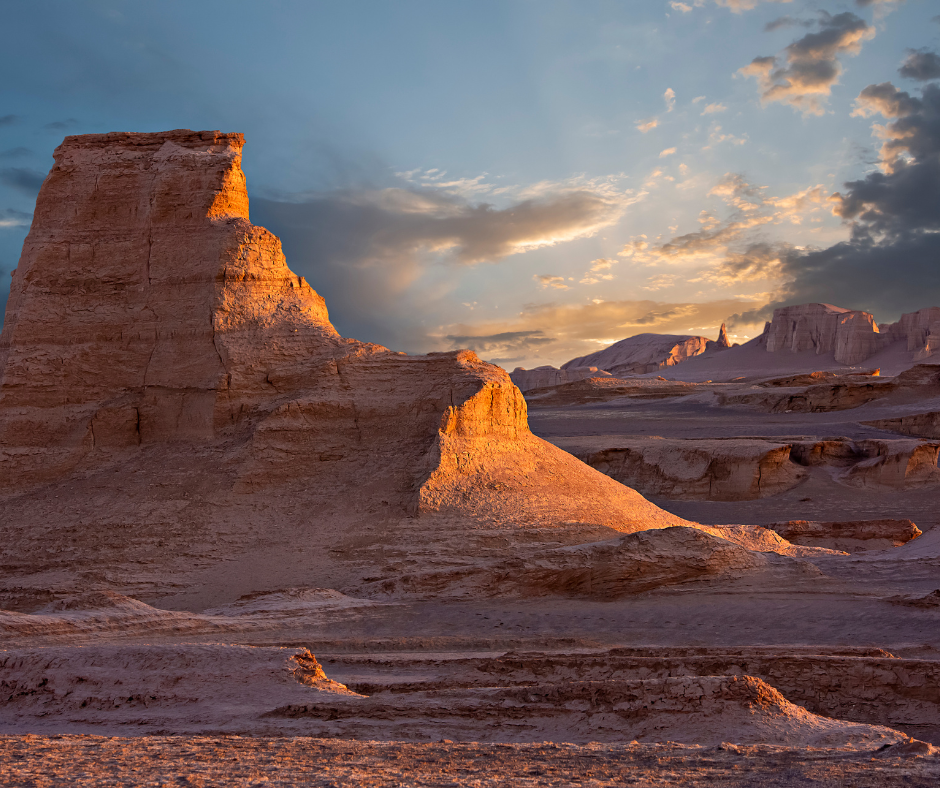
Some of these kaluts reach 80m in height. This desert also contains so-called ‘star shaped’ dunes, which have been shaped by the wind to form polygons, these dunes are vestiges of former seas and inland lakes.
Spend a night camping in the Lut Desert on our ‘Eastern Village Explorer’ or for a more comprehensive visit a longer safari into the depths of the desert on our ‘Hell’s Hottest Heart’ trip to unusual Iran.
Worth seeing also is the 2000-year-old Laft port, famous for its eye-catching wind towers with their unique architecture.
Zoroastrian Tower of Silence
Rising out of the ground just outside the city of Yazd is a Zoroastrian Tower of Silence.
The tower, from a distance looks like a flat toped mountain or hill and is built for the sole purpose of ‘excarnation’, that is the exposure of human corpses to the elements. The top of the tower which is circular is divided into three concentric rings each lower than the last. The outer ring is for men, the middle ring for women and the smaller inner ring is for children. Once the corpse is left at the top of the tower, the sun, vultures and other scavengers such as dogs assist in its decomposition.
In the centre of the tower is a pit, or ossuary where the bones are eventually deposited. The breakdown of the corpse in this way (until only bone remains) can take up to a year. Once the bones have been deposited in the pit, lye is added so that further breakdown can begin until there is nothing left.
The Zoroastrians have an ecclesiastical code of instruction that tells them what they must do to prevent contamination by cadavers.
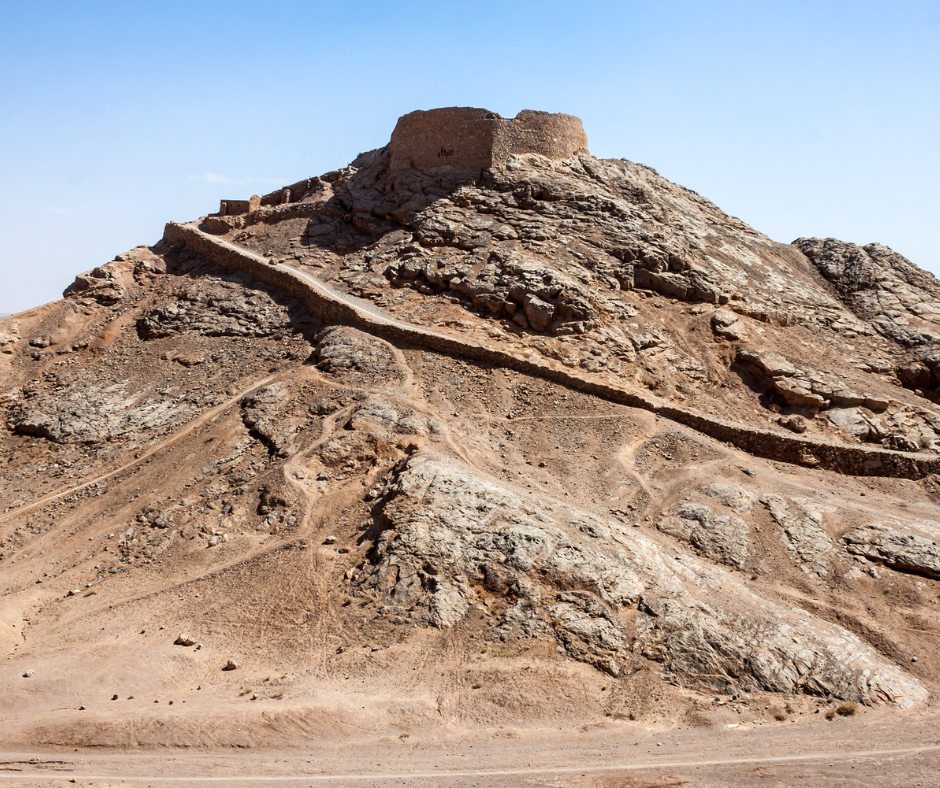
The code states that the dead must not come into contact with earth, fire or water and must be left out in the sun for the scavengers to eat, away from the local population.
The tower is no longer in use and Zoroastrians now bury their dead in cement or stone lined graves to prevent contamination and contact with the elements by demons. This method is not too different to the ancient method of embalming the corpse with wax as originally described by Herodotus.
You can see the Zoroastrian Tower of Silence on our ‘Hells Hottest Heart’ trip and other trips to Iran.

Kharanaq
The famous vibrating village of Iran! Well, that reputation is somewhat untrue. Meaning ‘Land of the Sun’ Kharanaq actually gets is reputation from the shaking minaret of its local mosque. The minaret is one of three moving minarets designed during the Seljuk period and is designed in a special way so it can move. You can make the minaret move by giving it a gentle push on the upper part.
The village is 4500 years old and is surrounded by mountains on one side and desert on the other.
The old village of Kharanaq is mostly abandoned and ramshackle, however new village is still inhabited. Worth a visit is the Kharanaq Caravanserai which dates to the Sassanian Dynasty and was once a lodge for travellers traversing the Silk Road. The bridge of Kharanaq is also worth a visit, surrounded in myth it is the only bridge in this province and only existed to transfer water from the seasonal river to farms.
The castle is also a main attraction and dates back over 1800 years. The castle is one of the world’s first to contain two and three story houses and contains 80 of these such houses and watch towers.
The castle was designed as a maze to create confusion among thieves and attackers, can you find your way in and out?
You can visit Kharanaq and its vibrating minaret on our ‘Persian Village Explorer’ trip and other trips to Iran.
Shushtar Hydraulic System
A complex irrigation system of the Sassanid Era, and then added to over centuries of development, the Shushtar Hydraulic System has been referred to as a masterpiece of creative genius by UNESCO. The infrastructure at Shushtar includes water mills, dams, tunnels and canals and at least parts of the system date to the time of Darius the Great. The key structure of the complex is the Band-e Kaiser or ‘Caesar’s dam’ a 500m long Roman weir over the river Karun, it was built by a Roman workforce by Sassanid order and was both the most easterly Roman Bridge and Dam and the first structure to combine a bridge with a dam. A subterranean system of channels called Ghanats supplied water for domestic use and irrigation, as well as connected the private reservoirs of houses, watermills and other buildings.
The system including its pair of primary diversion canals on the Karun River are still in use today, although perhaps not as actively as in ancient and medieval times. It delivers water the Shushtar city via a route of supplying tunnels.
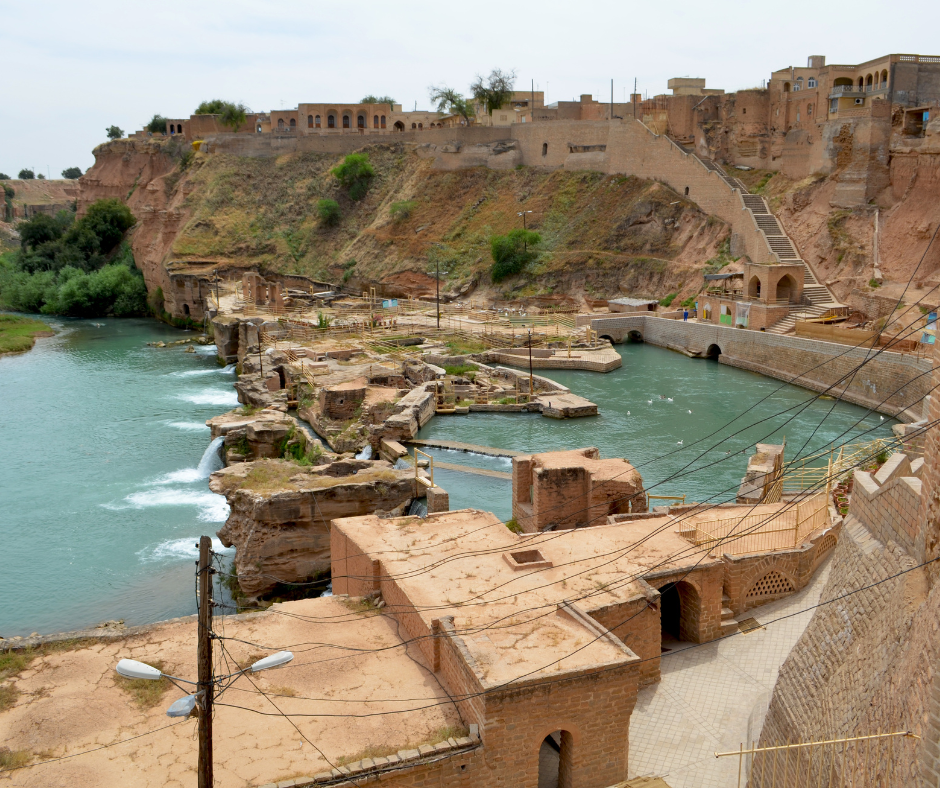
The area includes Salasel Castle, which is the axis for the operation of the system. The diversion of the Karun River caused a moat to develop around the city of Shushtar and also kept away unwanted visitors.
Visit the Shushtar Hydraulic System on our ‘Magic Carpet Ride’ trip to Iran.
For more information on unusual Iran check out our trips to Iran or drop us a line on info@invertedatlas.com or call +61(2) 7229 1926.


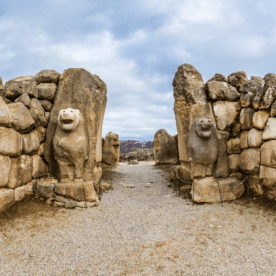


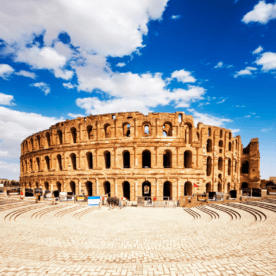

whoiscall
Good luck.